#finnart
Explore tagged Tumblr posts
Text




An Agent Stone design! If he was in the modern games :))
#sonic 3 movie#sonic movie universe#modern sonic#agent stone#dr eggman#metal sonic#stobotnik#fanart#finnart#sonic fanart#sonic the hedgehog
1K notes
·
View notes
Text


193 notes
·
View notes
Text

Super late for hattori day but ahem here you go
#dcmk#detective conan#detco#hattori heiji#kudo shinichi#heishin#finnart#sorry this is low effort dhdkhd#but i <3 them
405 notes
·
View notes
Text

here's a drawing i commissioned from my brother @fiananan. the price was a bag of chips. he made it in mspaint with a mouse.
the prompt was "conquest goes to starbucks just so he can feel the baristas' hand brush against his when he gets his coffee handed to him"
#invincible#conquest#conquest invincible#invincible conquest#i think he drew him very cutieful.#tedpost#finnart#this is like the funniest thing thats happened to me today. i stood there as he was drawing it and kept laughing.#it was my prompt and he thought it was funny enough to actually do... after some persuasion.#he drew conquest from memory btw. surprisingly accurate.#also i didn't even ask him to make the barista a man. he just did that himself.#im not laughing at him btw i always adore my brother's art. genuinely love this.
108 notes
·
View notes
Text
i made some smp flags for @mc395686 :3

lifesteal :
i dont know much abt lifesteal ill be honest buttt i tried my best

sdmp:
each symbol in the corner represents a member of sdp ( star - aztrosist, dollar - schlatt, knife - apandah, bar - mikasacus )
the fish are a reference to the sheer amount of fishing that happened on that server, as well as to tie the whole thing together visually. the ZZZ in the middle being the SDP logo sometimes seen on their merch. i also wanted it to be visually similar to nautical flags to add to the fishing theme

hermitcraft:
i tried my best here, i personally dont like it much but each symbol represents an aspect of the players within hermitcraft. the amount of redstoners, the terraformers, the more pvp-excelling players, and the more adventurous types.
i made the older/more fandom-historically impactful flags include the dirt block

dsmp:
mellohi and cat. the start of the disc war. the purple background representing the usage of netherite and having it kind of as leverage. which while not a major point of the server; i felt that while watching there was a higher level of threat and status from those who had it. it also brings a memory of the prison and such.
the triple x's are incorporated from the l'fuckberg flag (also a more accurate addition from the Amsterdam flag from which it derived from) . i just kinda liked them. i wouldve included a las nevadas reference as its the only arc from dsmp i personally care about anymore lmao. but like, i couldnt really find anywhere to put it.

smplive:
the camera referring to the live aspect as well as the border around it and [REC] in the corner being another reference to the live aspect. and also a reference to how a lot of thumbnails were like at the time. the dirtblock was explained before, smplive had a lot of influence on the MCYT community in the past 6 years, sort of acting as a benchmark for it. conarcoin has a million posts about it go to there for more info lmao. the grey background can be seen as a very simple color sort of similar to the simple set ups of streams as a lot of people got there start there and didnt exactly have the skill (both playing and content wise) that they have today

qsmp:
i dont like flags with text butttttttt it felt needed here. i borrowed a lot of the imagery from the federation aspect of the server, the sun is meant to both be a callback to las nevadas visually but also to the horizon across the ocean from the island. the sun behind the building acting as a representation of freedom being locked behind federation walls. i also wanted it to seem very sanitized and cold. which is why theres only really three colors. the black and white disrupted by the yellow adding to the freedom theme.
SCUMSMP FLAG ON THE WAY THERE NEEDS TO BE MORE CONTENT TO GET REFERENCE FROM!!!!!!!!!!
14 notes
·
View notes
Text


THE PRINCE
FINN BÁLOR
#my art#artists on tumblr#wwe#wrestling#art#raw#smackdown#nxt#drawing#finn bálor#judgment day#mitb#finnart#finn balor
6 notes
·
View notes
Text
AUGHHH MY WIFE
I made this right after the 4th wall break audio of Finn.
And since I don't have any new work done to post today, here u go, have some more "older" stuff.


362 notes
·
View notes
Text
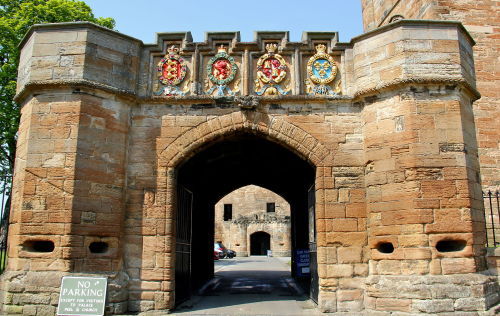
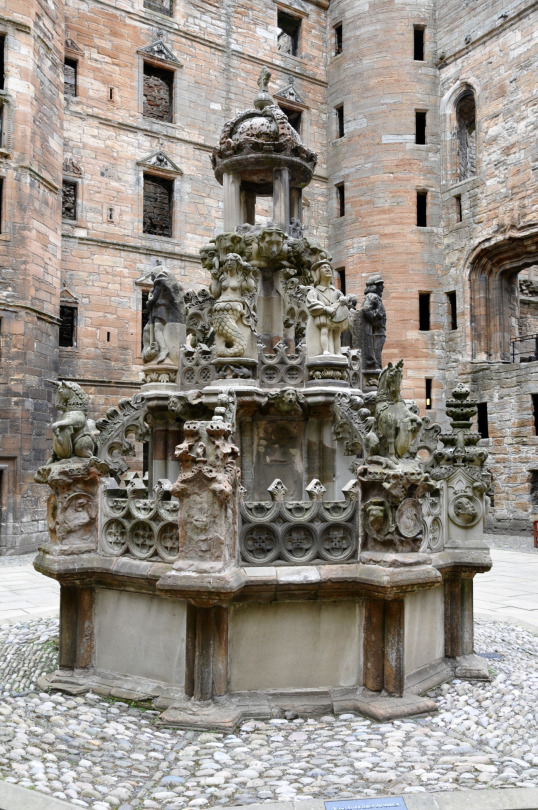


On August 16th 1540 Sir James Hamilton of Finnart was executed.
If ever there was a fall from grace this is it, Hamilton was an architect and noble, known as the ‘Bastard of Arran, back in the day Bastard was not classed as a swear word, it merely meant being illegitimate, in this case he the son of James Hamilton, 1st Earl of Arran. Knighted aged around 17 and seems to have been well thought of, at least by his peers.
If you have visited some of the castles and palaces of Scotland you will have seen Hamilton’s’ work, he is credited with much f the Palace at Falkland you see today, and the Palace at Stirling Castle. He also built Craignethan Castle in South Lanarkshire for himself after being gifted the Craignethan Castle by King James V.
Hamilton was also involved in intrigue and persecution; he murdered John Stuart, the Earl of Lennox, and participated in the oppression of the Protestants, including his own cousin Patrick Hamilton, who was burnt at the stake in 1528. Known for his temper, Hamilton also provoked the infamous 'Clear the Causeway’ skirmish in Edinburgh.
Also called Cleanse the Causeway, the Skirmish was the result of enmity between the House of Hamilton and the “Red” Angus line of the House of Clan Douglas, both powerful noble families jealous of each other’s influence over King James V. The fight went badly for the Hamiltons, and Sir Patrick Hamilton and about 70 others were killed in the incident. The Earl of Arran and Sir James fought their way out, and escaped along a narrow close. Stealing a nearby pack-horse that had come into the city with coals, they fled through the shallows of the Nor Loch marshes.
Having survived this he seems to have still been in a good position of influence in the Royal Court and held the post of Lord Steward of the Royal Household and Master of Works.
For unexplained reasons his fickle King became convinced that Hamilton was plotting against him and, despite there being no evidence to support this, arrested his old friend, some of the evidence the King offered on August 16th 1540 at the trial was from 12 years previous and reads;
“Sir James Hamilton of Finnart, having been convicted of the treasonable shooting of guns and firing of missiles outside the palace of Linlithgow and from the bell-tower of the same, at the king and the people in his company, both at the time the king came to the palace and when he withdrew from the same, and especially at his lodging place in the same town, the king being personally present at the time of the firing of the said missiles. And for art and part in the treasonable imagination, planning, and consultation, vulgarly called devising, of assassinations, at the time it is said he was with Archibald Douglas of Kilspindie and James Douglas of Parkhead at the chapel of St Leonard near Edinburgh, after the forfeiture of Archibald Douglas, formerly Earl of Angus, George Douglas of Pittendreich his brother, and the said Archibald Douglas, his father, and also during the siege of Tantallon Castle in consultation with the said Douglases, how he would enter by the window near the upper part of the bed, 'the bedhead’ (superiorem thori - literally above the pillows), in the King’s palace near Holyrood Abbey, and how there he would commit the slaughter of the King. And for common treason and conspiracy against the King, his realm and lieges. Therefore it was given that this James forfeited his life, lands, rents and possessions to the king as his escheat, to remain with him in perpetuity.”
That is how it read from the record books, they weren’t keen on paragraphs back then!
After losing his head in Edinburgh King James seized his lands, taking the silverwork from the chapel at Craignethan along with a chest of the families paperwork many of which were destroyed by crown officers. Cardinal Beaton gave money to his widow, as she was his relative.
That wasn’t the last the King heard from The Bastard of Arran though, Finnart is said to have appeared to the James V in a dream, and declared that he “would shortly lose both arms, then his head.” This prophecy came true, as the King lost both of his young sons in 1541, and died himself in 1542. The story was recorded by John Knox and George Buchanan.
Wiilliam of Hawthornden and George Buchanan both cited the execution as evidence of arbitrary cruelty and greed in the behaviour of James V, I've said it before that the Stewarts were a ruthless lot. The reasons for Finnart’s execution remain unclear and are still debated between some historians to this day.
Pics are of Linlithgow Palace and Craignethan Castle.
18 notes
·
View notes
Text

The movie was banger yo!!! Now,, wheres all the stone and shadow fanart???
1K notes
·
View notes
Text

💜
#digital art#illustration#artwork#drawing#fanart#finnart#finn balor#the demon king#fergal devitt#wwe#pro wrestling#wrestler#the judgment day
188 notes
·
View notes
Text

Happy lunar new year and also hejihogu from memory
26 notes
·
View notes
Text
I keep looking at this fanart of Finn (Finnart, if you will) and getting emotional because he's just some guy!!! He's just a dude!! I care about him so very much 👉👈
7 notes
·
View notes
Text
TWELVE
I spied a rickety ladder leading up to the loft. Climbing up, I found myself looking out of a broken skylight at the vast expanse of Luce Bay with the Mull of Galloway stretching into the distance. I shouted down to Bill: ‘This is where we are going to live.’
TESSA KNOTT SINCLAIR, owner of Glenwhan Gardens
NATURE PROBABLY INTENDED the Mull of Galloway to be an island but decided against it at the last minute. This lofty, precipitous headland, landlocked by an isthmus, is none the worse for it, however. It has a rare island feel about it that switches clock time off, so that a watch means as much as a hill of beans. Even the onomatopoeic placenames may soothe: Mary Wilson’s Slunk, Sheep Hank, Stinking Bight, Nick of Kingdom, Lagantulluch, Muldaddie, Cairnie Finnart, Scarty Head and Killantringan. We tramp the beach at West Tarbet, only a few hundred yards from East Tarbet, although the two might be on different planets. On the west we have sheer cliffs hammered by waves, while East Tarbet is less dramatic and greener.
On the eastern side, on Mull farm, at the foot of a cliff that faces Luce Bay, is the oldest ecclesiastical building in Galloway, the medieval Chapel of St Medana, partly built out of a cave. Nearby are the Chapel wells, which are filled with sea water at high tide. Bathing in them as the sun rose on the first Sunday of May was considered a cure-all. Most of the parishioners would congregate there on ‘Co Sunday’ to bathe and leave gifts.
We fall in with David Green, an engineer, who is wild-camping on the western shore, and scuba diving. Disarmingly, he introduces himself as ‘a spectrum dweller’ and brings me back up to speed with our slipshod times: ‘There are so many idiots coming up from the northeast to fish off the rocks here. The first thing they do is build a fire and get their carry outs out. We had them here last night. At four in the morning the wind blew their pop-up tent down, so they just burned it. It has got really bad the last few years. They leave their mess everywhere.’


We discuss jetsam that was battered into a slippery crag years ago. David, who has dived around here for years, knows about it: a gigantic, rusting gas heat-exchanger, which fell off a ship some 15 years ago and has been left for the archaeologists of a future time to fight over, to supplement the wreck of a tanker that ran aground in gales near Killantringan lighthouse in 1982 and still sits, half-submerged.
We are at the southern end of the Rhins of Galloway, that 25-mile-long hammerhead peninsula you see on maps of western Scotland. The Rhins itself would have been an island but for the flat throat of land near Stranraer. The Mull, half a mile at the most from the tarbets, is where the peninsula juts into the Irish Sea: Scotland’s Land’s End, crowned by a lighthouse built by Robert Louis Stevenson’s grandfather in 1830. Today we haven’t the foggiest where the lighthouse is. It’s pea soup: visibility is down to the length of your shadow. On a clear day there are spectacular views of Scotland, Ireland, the Isle of Man and Cumbria, and you can see thousands of gannets diving on the cliffs. The RSPB has a nature reserve there and porpoises and dolphins often swim in the sea below. Way beneath the lighthouse the currents of the Solway and the Clyde meet in a maelstrom. From what I hear a Galloway 'witch', spurned by a sailor, wove nine tides to entrap him at the Mull. But the sailor heard about her spell and always lugged his boat over the tarbet. He was never doomed but the spell is still in place today.



Creepier still is the true tale of three lighthouse keepers who vanished from their post at the remote Flannan islands in 1900. Their disappearance remains one of the most puzzling enigmas in maritime history. The unsolved mystery was the basis for The Vanishing, a 2018 film, starring Peter Mullan and Gerard Butler, much of which was shot at the Mull and up the western crags of the Rhins. The crew tidied the old lighthouse garden. With wood left over from the set, volunteers built raised beds and restored it to its former glory.
The Mull of Galloway became a public asset thanks to £300,000 from the Scottish Land Fund in 2013. The sale from the Northern Lighthouse Board included a community-run lighthouse museum, three letting cottages, coastal heathland and cliffs – not the lighthouse itself, whose foghorn has been painstakingly restored to functional order.
Picture-postcard Portpatrick was also the subject of a community buyout. It is the main village on the west coast of the Rhins with its pastel houses running down to a small harbour with a multitude of boats. There is a local tradition, but no documentary evidence to support it, that Peter the Great lodged overnight here in 1698.



A ferry service ran from Portpatrick to Donaghadee (the Dover of Ireland) on the coast of County Down for some 300 years until 1867. At its peak 80,000 people a year sailed the route. But strong westerly winds took their toll on Portpatrick pier. Traffic switched to the longer but safer route along Loch Ryan, from Stranraer to Larne. And in 1871 the lighthouse at Portpatrick was removed stone by stone and shipped to Colombo in Ceylon (now Sri Lanka).
On July 3rd, 1834, the Caledonian Mercury wrote of an entrepreneur who dived for sunken treasures between Portpatrick and the Irish coast, describing it as 'a remarkable instance of ingenuity and enterprise': a new apparatus that allowed men to walk on the seabed: 'The people on the coast, envying him his rich harvest, have come off in boats and impeded his labour by throwing stones and other missiles, to his vexation, annoyance and interruption.'
The Mercury added: 'He employs several men, who descend in turn - can stay five hours at a time with the utmost ease, as a proof of which we have heard it said, that one of the divers who was tipsy the day before, on going down yielded to a propensity to sleep, and a companion had to descend to raise him from his slumbers.'

In 2007 the private owners of Portpatrick harbour applied to build a 57-berth marina and pontoons, but the council deemed it ‘completely inappropriate for the conservation of the area’. Locals formed a trust, and by 2012 they bought the harbour for £350,000.
South of Portpatrick (where the Southern Upland Way begins) there are umpteen caves and indentations. William Purves, a Victorian traveller, clown and strongman, shunned the world for Sheep Rink cave. There are two photographs of this hirsute hermit, in one of which he is holding a cup in his left hand and what looks like a kebab in his right but is probably a good helping of bannock. He did odd jobs for farmers and, ever the performer, sold postcards of himself. He even had a cave visitors’ book. As he got older, he flitted into a summerhouse near Ardwell before ending his days in the poorhouse in Stranraer.
The gulf stream warms the Rhins, and at Port Logan Botanic Gardens, there are groves of gunnera and eucalyptus, and numerous plants from Australasia, the Americas, and Southern Africa. These gardens famously doubled as Christopher Lee’s in The Wicker Man.
Walk along Luce Sands on a hot day and you could, if you’re a dreamer, imagine yourself in the Caribbean. The beach, which unknown copywriters dubbed ‘Scotland’s little secret’, is sweeping, long, shallow and gorgeously situated. At low tide you could walk the six miles between Sandhead and Ringdoo Point along sand. Its dunes made it an official Special Conservation Area, but, as usual along south-west Scotland, there is a caveat.
Yes. War games and the physics of death again. Red lines on the map. Danger Area. West Freugh has had a military presence of some sort or another since the First World War. Now the MoD is considering the 800-acre site for a UK deep space monitoring station. It is already a land and sea, weapons testing and training base. (In April 1957, a UFO was seen on radar 50,000 feet above RAF West Freugh. It was stationary for around 10 minutes and then took an impossibly sharp turn. It was described as being as large as a ship, and bigger than a normal aircraft. )

Fifty years ago, nearby Glenwhan was wild moorland, but it is now an impressive garden with plants from around the world: a slice of heaven, with winding paths, tasteful sculptures, tranquil ponds, and wonderful sea views. Hungry for sandeels, kittiwakes breeze down the coast, and terns steer east. Tessa Knott and Ian Sinclair bought Glenwhan over the telephone in 1971 after exploring Galloway ruins during a visit.
Now many years on, the garden they created is, I would agree with Tessa, ‘a small piece of Nature’s magnificence’.
#mull of Galloway#killintringan#saint medana#the wicker man#Luce#glenwhan gardens#ufo sightings#cave dweller#rhins
0 notes
Text
Man charged and dog seized in connection with fatal chihuahua attack in Glasgow | UK News
New Post has been published on https://petnews2day.com/news/pet-news/dog-news/man-charged-and-dog-seized-in-connection-with-fatal-chihuahua-attack-in-glasgow-uk-news/?utm_source=TR&utm_medium=Tumblr+%230&utm_campaign=social
Man charged and dog seized in connection with fatal chihuahua attack in Glasgow | UK News
A man has been charged after a chihuahua was killed in a dog attack in Glasgow. Police Scotland launched an investigation after a 25-year-old woman was injured and her pet dog killed in an attack in the city’s Finnart Street on Monday 18 March. At the time, the force said the woman was left with […]
See full article at https://petnews2day.com/news/pet-news/dog-news/man-charged-and-dog-seized-in-connection-with-fatal-chihuahua-attack-in-glasgow-uk-news/?utm_source=TR&utm_medium=Tumblr+%230&utm_campaign=social #DogNews
0 notes
Text
“I’ve been to hell before & it spit me out because hell couldn’t handle my demons”
Finn Balor at wrestlemania39 this year taking out Edge inside a hell in a cell match 🔥

#art#digitalart#fanart#wwe#wrestling#drawing#wrestlemania#hell in a cell#illustration#finnbalor#finn balor#finnart#edge wwe
10 notes
·
View notes
Text

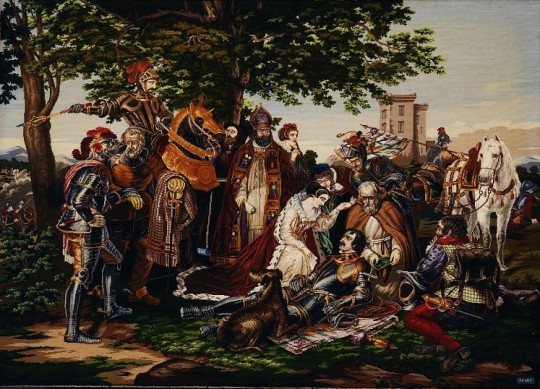
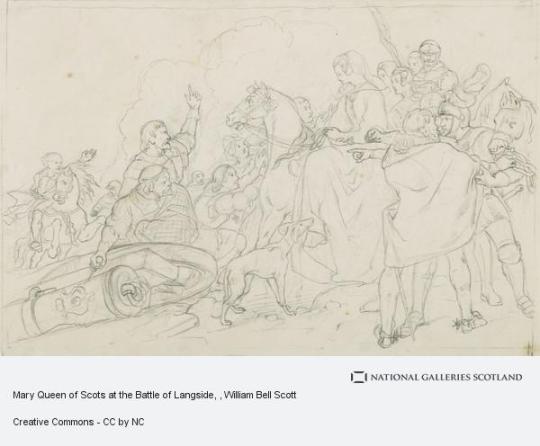
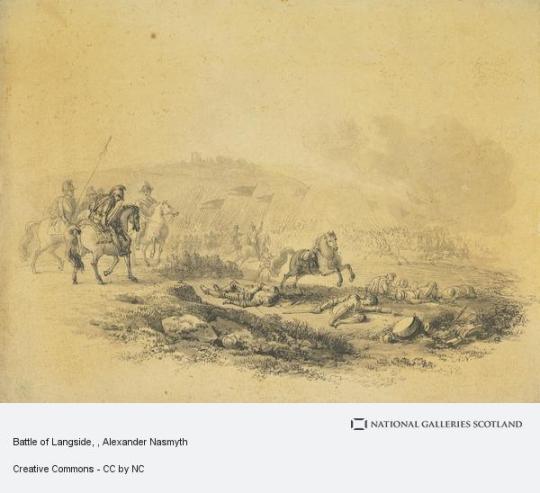
DavysStreams
@davysstreams
A Tumblr blog for my streams, Sports, TV Shows and Movies, give me a shout if you want anything posted.
Blog settingsAsk me anythingFollowing
Posts
Pinned Post
davysstreams
Jan 18, 2022

If you don’t want to miss a game why not go for an IPTV set up. DM @Gabbo1980 on Twitter, and mention my name, you get ALL the games and more the costs just £10 a month or £70 for a full year, it is the way forward and in my eyes a bargain. You’ll need an Android box or better still a Amazon Firestick, which costs around £30, but you wont regret it. Some TV’s have also got Android on them nowadays. As well as sports you get loads of other stuff, all the Sky Cinema channels, documentaries, kids channels, channels from around the world including Irish TV channels, USA Movies, if you were paying for this through Sky, BT, Virgin etc it would be over £100 per month.
4 notes
davysstreams
4m ago
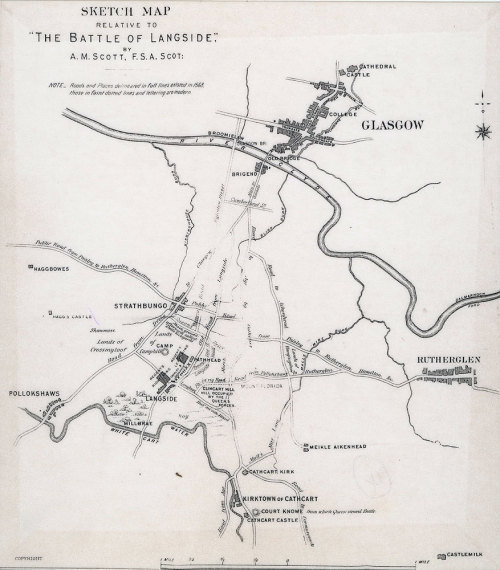



May 13th 1568 saw the Battle of Langside.
The army under King James VI name was under the command of the Regent and Mary’s half brother James Stewart, Earl of Moray whilst his deputy and commander of the vanguard was James Douglas, Earl of Morton. The army consisted of troops hastily assembled but included some experienced soldiers - notably William Kirkcaldy of Grange. Furthermore the Regent’s cause was widely supported amongst the Scottish nobility, many of whom had profited from the Reformation not least from the cheap acquisition of former church lands.
The Queen’s army, whilst nominally headed by the Mary, was under the military command of Archibald Campbell, Earl of Argyll. It included a number of a notable magnates amongst them the Earls of Eglinton, Casselis and Rothes.
With The Earl of Morton in command of his main force, Moray appointed Kirkcaldy to have ‘special care as an experimented captain to oversee every danger‘. Kirkcaldy took two hundred hagbutters “musketeers” forward to occupy cottages on each side of Long Loan, where garden walls offered protection from cannon fire, and he reserved two hundred pikemen and cavalry on the west side of the village.
Realising the danger, Mary sent Maitland to negotiaite with Moray, but the Hamilton’s were spoiling for a fight and jumped the gun. Kirkcaldy rode from wing to wing to supervise the defences, while the twenty-five-year-old Lord Claud Hamilton advanced with Mary’s main army of 2,000 men supported by and George, 5th Lord Seton’s cavalry. They stormed into Long Loan, where Kirkcaldy picked them off easily with his hagbutters backed by Ker of Cessford and Home, on foot with pike in hand, leading his six hundred spearmen. Mary’s troops fought their way forward bravely despite the cost, and almost turned Moray’s right flank, but Kirkcaldy, ever vigilant, saw the danger. He called up the rear-guard led by Sir William Douglas and Lindsay as reinforcement.
Kirkcaldy had orders from Moray to minimise bloodshed, and his forces struck the enemy on their flanks and faces, throwing them into confusion. Mary’s van needed support from the main body of her troops under Argyll, but it is said that at this critical moment he fainted, possibly with an epileptic fit, and the leaderless Argylls refused to budge without him. According to a French source, Mary rode forward from a nearby hill to lead them into battle herself, but the Argylls continued to quarrel among themselves and would not listen to her ‘eloquence’. Yet it is more probable that she made good her escape.
Kirkcaldy now moved forward, sending in pikemen against the Hamilton’s, but obeying Moray’s instruction to avoid loss of life and to capture as many as he could. Mary’s troops were routed, and the Argyll’s broke away, fleeing back to the Highlands. Argyll, the unwitting cause of Mary’s disaster, escaped to Dunoon, and would not submit to Moray. Only a hundred of Mary’s men were slain but three hundred, including Seton, James, 4th Lord Ross, and Sir James Hamilton of Finnart, were taken prisoner. Robert Melville, who had not been involved in the fighting, was also captured, but, with Kirkcaldy as his brother-in-law and two brothers supporting Moray, he was soon freed. The whole skirmish that sealed Mary’s fate, and it was little more than this, took three-quarters of an hour.
A couple of interesting asides is the map’s depiction of Glasgow at this period. Despite its cathedral and university, it was little more than a town surrounding its castle. And William Kirkcaldy of Grange, who basically won the battle for King James as the only experienced “general”, went on to support Mary suggesting a peaceful settlement with her was possible
Grange went on to hold Edinburgh Castle in her name in what is known as the “lang siege” after surrendering he was hanged on 3rd August 1573.
9 notes
·
View notes